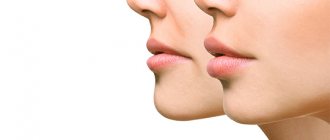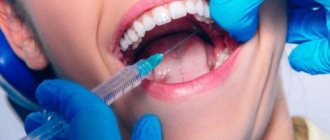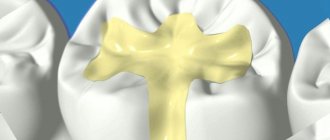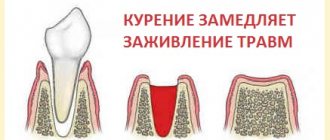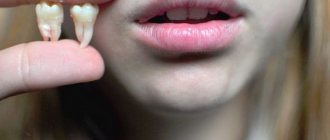Botox is a drug based on botulinum neurotoxin type A, which is produced by Allergan (USA). This word is also used to refer to all analogues of the drug. The botulinum toxin injection procedure gained popularity at the end of the last century and has since remained the most popular non-surgical anti-aging technique.
How Botox works
Botox injection is an effective technique for eliminating facial wrinkles and forming a beautiful facial contour. Essentially, this is a correction without a scalpel.
Botox is a weakened, purified neurotoxic drug based on botulinum toxin. The latter is produced by the bacteria Clostridium botulinum. A powerful neuroparalytic that can relax facial muscles.
Botulinum toxin A has been used in cosmetology for more than 30 years. It is injected into the area of the facial muscle, as a result it relaxes, and the skin relief of the area is noticeably smoothed. The hydrobalance of the deep layers of the dermis is restored, the natural production of collagen and elastin is stimulated.
Botox is used to correct facial contours, smooth out wrinkles on the forehead, in the eye area and nasolabial triangle.
Why are injections given into a vein?
If medications can be taken in the form of tablets or tasty syrups, why inject them into a vein? The fact is that not all medications, when taken orally (by mouth), act effectively and quickly. After the drug is absorbed in the intestine, it does not immediately reach the desired organ. It still has to pass through the liver, where part of it will inevitably be destroyed. In addition, the medicine is forced to “take a detour” through the body, and its effects will not appear immediately.
When administered intravenously, the active substance immediately enters the general bloodstream and, bypassing the liver, reaches the desired organ. Sometimes this is of fundamental importance.
Everyone is well aware of how the procedure goes. The nurse asks the patient to place his arm on the table, palm up, and applies a tourniquet above the elbow. You may be asked to “work with your hand” - clench your hand into a fist several times. Due to this, the veins fill with blood even more, swell, and are easier to get into with a needle.
The nurse inserts the needle and pulls the syringe plunger slightly onto the neck. If blood appears in the syringe, the needle has entered a vein. The tourniquet is removed and the medicine is administered. Many drugs must be administered slowly, otherwise unpleasant symptoms may occur.
The elbow is the most common site for intravenous injections. But some people have veins in this area that are “bad” or already “punctured”, and the whole skin is bruised. In such cases, the nurse may use another vein, for example, on the back of the wrist, in the ankle area.
Exposure time
The duration of the effect of Botox depends on the individual characteristics of the body, habits, and care procedures:
- Age. Typically, botulinum therapy is indicated for people over 45 years of age, but often younger people also need correction. The breakdown of drug substances in a young body occurs faster, so the duration of the effect is reduced.
- Behavior. Poor nutrition, lack of sleep, stress and negative habits affect not only your well-being, but also your appearance - they worsen the effect of injections.
- Quality of the drug. The drug must be original and stored correctly.
Chondroprotectors
Such drugs are taken for degenerative-dystrophic diseases of the joints and spine to protect hyaline cartilage. The process of destruction of cartilage tissue during arthrosis and arthritis is progressive and irreversible. It can be slowed down with the help of chondroprotectors, which are especially effective when they “directly hit” the joint cavity. They improve local metabolism and nutrition of intra-articular tissues, and most importantly, stimulate the synthesis of their own collagen.
Collagen is the main component of cartilage, which performs a protective function. Thanks to the cartilage coating, the articular surfaces of the bones slide rather than rub, and movement does not cause pain. Most often, doctors prescribe Alflutop; the frequency and duration of the course is determined individually. The minimum number of injections is 5.
Signs of Botox working
It is easy to feel the effect of botulinum toxin after the procedure: the facial muscles at the injection site stop working almost immediately, although a trace of the wrinkle will still be visible. For example, it will not be possible to frown your forehead, and, therefore, folds on the skin will not be able to form.
On days 5-7, the distribution of the drug ends, the effect becomes maximum: the skin is noticeably fresher, acquires a healthy shine and tint, and cosmetics fit perfectly on it. Even deep wrinkles are gradually smoothed out.
When administered correctly, Botox injections do not turn the face into a “mask.” There will still be facial expressions and emotions. To get truly excellent results, contact beauty centers - cosmetologists with extensive experience work there.
Botulinum toxin: what is it and how does it help in the fight against wrinkles?
The effect of Botox is achieved due to the neurotoxin botulism type A. It is one of the most dangerous poisons in the world, but in cosmetology such microscopic doses of the substance are used that it is not at all difficult for a professional to control its effect and get a positive result.
Naturally, botulinum toxin is not used in cosmetology in its pure form. It is first stabilized and purified from protein impurities in the laboratory.
The effect of Botox is as follows: with an injection, it enters the muscle, blocking the transmission of nerve impulses in it. As a result, the muscle relaxes, its contraction stops, and as a result, the skin adjacent to it becomes smooth.
Repeated procedures
After Botox is removed, you can repeat the course to get the results back. Wait until your facial muscles have fully recovered to get the best results.
If Botox was administered for the first time, a corrective session is usually carried out after 8 months. All subsequent injections are performed at intervals of 4-6 months. With this technique you can maintain consistently good results.
If procedures are performed too often, the sensitivity of the dermis and nerve structures increases significantly. Botox dissolves faster each time, correction is required more often.
Indications
- osteoarthritis;
- arthritis;
- bursitis;
- synovitis;
- tendinitis.
Joint diseases are very common, especially among older people. If you are one of them, or the time has come to repeat the course of treatment, call us. Our center employs high-level specialists with extensive experience, making patients feel comfortable and confident. If necessary, you will be prescribed one or more intra-articular injection procedures and a drug will be selected based on the indications.
Is it possible to extend the result?
Follow all the cosmetologist's recommendations to get the maximum, safe and prolonged effect of the procedure.
We will consider the main recommendations below:
- Physical activity in the first 7-10 days after the session significantly reduces the effect of botulinum therapy.
- There are no additional jokes between the main courses! They will provoke the production of antibodies, which destroy the toxin and reduce its effect to a minimum.
- Avoid solariums, baths and saunas.
- Assess the compatibility of current pharmacotherapy with contraindications to botulinum therapy.
Hyaluronic acid
It is also called a “synovial fluid prosthesis”, since hyaluronic acid acts as a lubricant that protects the joint from injury. It normalizes the composition of the synovium, which becomes denser and more viscous. Hyaluronic acid perfectly relieves pain and inflammation, activates the processes of self-regeneration of cartilage. Its most common use is in patients with arthrosis. With this remedy, injections are often made into the hip joint and knees. The standard course of treatment consists of 3-5 procedures with a week interval between them. The effect lasts for a long time, up to 1 year. The most frequently prescribed drugs with “natural lubrication” are Gialgan, Hi-Flex, Gialsin.
Lifestyle after the procedure
The strictest recommendations for the first 3 days after the session:
- Avoid alcoholic drinks: ethyl alcohol increases blood flow to the face.
- Do not take hot baths or go to the sauna.
- Avoid visiting the beach and solarium.
- Protect your face from direct sunlight.
- Avoid even minimal physical activity.
- Do not take muscle relaxants, tetracycline antibiotics, or B vitamins.
- Do not massage the injection area.
Choice of pain medications
For chronic types of pain, the physician must first determine the underlying causes and nature of the pain (whether the pain is referred, neuropathic, or central). Only after this can he prescribe a suitable course of treatment with an anesthetic drug.
In case of acute pain, the doctor must determine the possible risk of side effects on the gastrointestinal tract and cardiovascular system. If there is no dyspepsia, then any non-steroidal anti-inflammatory drugs are allowed to be used, but if there is, you should take Ibuprofen. You can also take Diclofenac, Naproxen, Nimesulide or Meloxicam as an alternative.
If you have heart problems, the patient should stop taking non-steroidal anti-inflammatory drugs and turn their attention to opioid drugs, as well as paracetamol. If the risk is moderate, then the patient is prescribed Nimesulide, but on the condition that blood pressure is at the normal level or can be brought to this level or any other drug to lower blood pressure.
Choosing pain medications is a complex procedure because there are so many factors to consider
If there is a high probability of bleeding in the gastrointestinal tract, the patient should take non-steroidal anti-inflammatory drugs together with proton pump inhibitors. Such inhibitors primarily include Omeprazole. It's all about the risk of bleeding when taking NSAIDs. In order to reduce or prevent it, their use is allowed only in combination with proton pump inhibitors.
If there is a high probability of simultaneous occurrence of complications associated with the cardiovascular system and the gastrointestinal tract, the patient is required to take Nimesulide together with acetylsalicylic acid and the proton pump inhibitor Omeprazole.
If the pain subsides within a week, then treatment should be continued until the discomfort is completely relieved. When this does not happen, the patient should use muscle relaxants and local anesthetics.
The administration of corticosteroids (hormonal drugs) is allowed only if it is confirmed that the patient does not have any signs of developing tuberculosis of the joints or spine.
Note! If the patient has very severe pain, but the drugs have no effect, then the problem is in the nature of the disease. In such a situation, as a rule, there is a high probability of a non-infectious nature of the pain.
Undesirable effects
It is impossible to predict in advance how the substance will be distributed, how muscle fibers will react to the effects of botulinum toxin.
Typical side effects are redness of the facial skin, the appearance of papules, pain, and swelling.
Rare complications and their causes:
- Strong relaxation of the frontal muscles gives the effect of lowered eyebrows.
- Excessive botulinum toxin injections can lead to eyelid spasm.
- Excessive physical activity and ignoring recommendations are a common cause of asymmetry, bruising, and articulation disorders.
- Individual reaction: headaches, lumps and papules at injection points, increased intraocular pressure.
Carbon dioxide (carboxytherapy)
The effect of carboxytherapy is based on the property of carbon dioxide to cause oxygen starvation in tissues. Gas injections are given through a special device, and after the injection the body strives to enrich the joint with oxygen, increasing its blood supply. Metabolism accelerates sharply, and much more nutrients are supplied to damaged structures. In a matter of minutes, carbon dioxide leaves the joint cavity, and the effect remains for a long time.
Attention! The advantage of this unique technique is the absence of side effects, since CO2 is a natural element, a product of metabolic processes.
Carbon dioxide treatment was developed by Czech specialists from the city of Karlovy Vary, where the famous sanatorium is located. It has been successfully treating diseases of the musculoskeletal system for more than a century.


